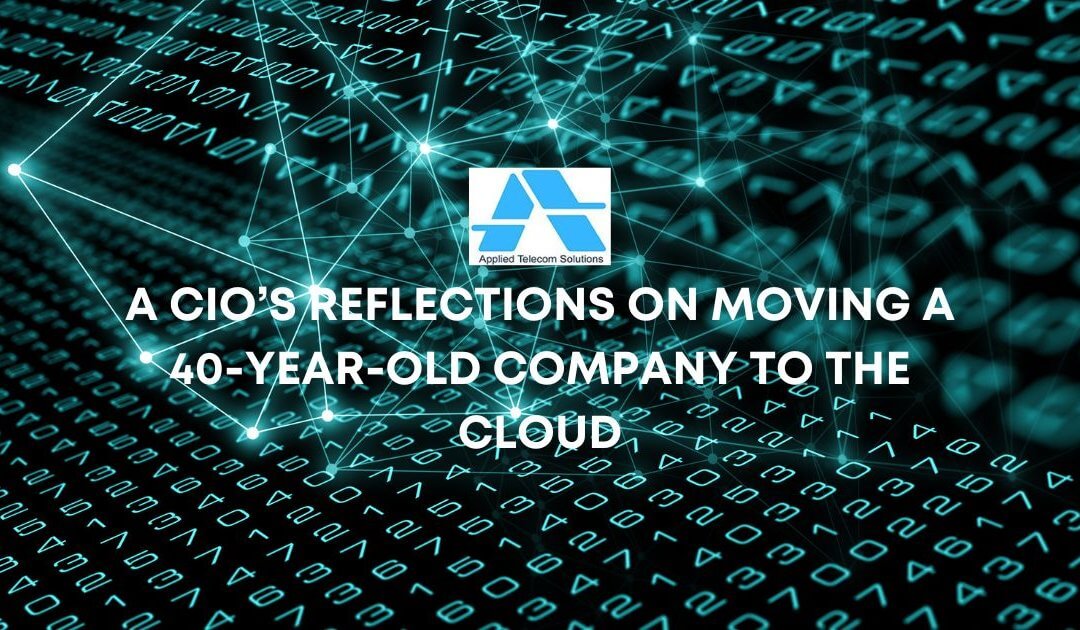Today cloud computing is driving much of the technological advancement. Any IT problem or solution is, one way or another, related to cloud computing. Because each of my previous postings has centered on the cloud, I realized it would be a good time to provide my viewpoint as the CIO of a forty-year-old firm that has recently moved to a 100% cloud-based portfolio. If you’re in the early phases of transition or have not yet begun to make the shift to the cloud, there is plenty to learn from those of us who have gone before you.
When I joined Aspect in early 2014, the IT environment was severely antiquated and, in so many cases, built on edge solutions and platforms. These very old versions of on-premise apps were highly customized and had not been upgraded or patched for a long time; in fact, IT lives in a world where changes are feared, both because of the frailties of the power grid and of the dread of being held liable if those updates resulted in an outage. Despite this, the maintenance expenses for goods we were not servicing, or upgrading were substantial.
The data in the prior systems were of low quality and were difficult for the user community to access. Furthermore, few systems were really connected, relying on dual input, date uploads, or human changes to keep data “in sync.” Simultaneously, our firm introduced an entirely new cloud-based product set, necessitating numerous changes in order administration, shipping, accounting, and finance. The moment has come for Aspect to move its internal processes to the cloud.
Developing Resources
Fortunately, our CEO and CFO saw the critical need to transform the IT function and capabilities, and they were willing to make the necessary expenditures. It was obvious to them and to me that the majority of our apps, data, and services would be moved to the Cloud. Our initial challenge was to convince the IT staff, which, while highly skilled, was stuck in the traditional way of doing things: move slowly and don’t damage anything. To be honest, this was a significant transformation effort. It requires swiftly developing a future vision and then finding team members who are both capable and eager to make that shift.
The skill sets required migrated away from developers, administrators, and DBAs and toward business analysts, data analysts, and integration specialists. People had to be retrained or repurposed in many situations, while in others, fresh personnel with cloud solution expertise had to be hired from outside.
Finding the Right Vendors
Before joining Aspect, a lot of time was spent by huge groups of individuals documenting “requirements.” Those with an experience in packaged software understand the need to focus on use cases and move fast to rapid prototyping, testing, integration, and data-related activities. It also took some effort to find suitable providers for our organization. Some of our vendors were unprepared for the complexity of our company and, in some cases, grossly understated it in their offers. One of the smartest decisions we made was to seek advice from boutique consulting companies with extensive knowledge of a certain product or technology. With this outside assistance, we were able to tap into a more extensive knowledge base and swiftly identify acceptable vendors and solutions for Aspect Software.
Reaping the Benefits
If I had to pick just one reason to drive our cloud migration, it would be speed to market in terms of making modifications and adding features and functionalities rapidly to empower our business. Lengthy implementation cycles and focusing on the underlying platforms are no longer the norm. Our attention is now focused on business dialogues, testing, and implementation. Aspect’s IT specialists may now focus on value-added projects while outsourcing system management and fundamental hardware/platform responsibilities. We reversed the 80/20 ratio, so now 80 percent of our time is spent on business-impacting tasks rather than maintenance.
We are also spared the burden of updates and fixes, thanks to our vendors’ enormous efforts in R & D. Rather than altering the program on our end, we spend our time engaging with our vendors to ensure that the functionality we want is included in their basic product.
Cloud apps have significantly improved our capabilities, particularly in terms of having interconnected systems with a unified data model and reporting platform. Before the cloud migration, practically none of our platforms were integrated other than through manual uploads; currently, nearly every system is linked together utilizing an integration toolset, ensuring that data flows uniformly between systems and then into our database system.

